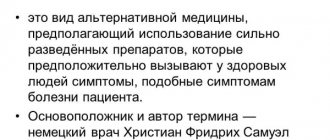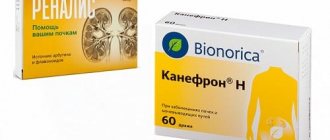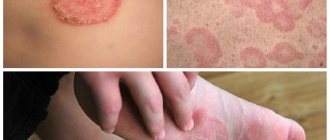The homeopathic medicine Silicum acidum (Silicea, Silicea, Silicea terra) is used for the treatment of inflammatory diseases, control of alcohol addiction, treatment of mental disorders and for the prevention of many pathologies of internal organs.
Treatment with the drug continues for a long time, positive dynamics are observed from the second week . Taking the medicine normalizes metabolic processes in the body, relieves nervous tension and helps prevent the disease from becoming a chronic process.
Forms of release and composition of the drug Silicea
The homeopathic remedy is available in several forms:
- Homeopathic granules. The medicine is packaged in bottles, each containing 10 g of the drug. The second type of packaging of granules: pencil cases with special counters, 4 g. Secondary packaging of bottles and pencil cases consists of a cardboard box. Composition of the drug:
- aqueous silicic acid;
- sugar;
- lactose.
- Gastrogel. The cardboard package contains 30 sachets, each containing 15 ml of substance. Contains anhydrous colloidal silicon dioxide in a volume of 3.5 g.
- Silicon balm colloidal suspension. The balm is available in bottles. The cardboard package contains a bottle and a measuring spoon (15 ml). The drug consists of microparticles of silicon dioxide dispersed in water. Compound:
- silicon dioxide, 28 mg;
- purified water, 420 mg.
Pharmacological properties
Silicea is a homeopathy (indications for use are considered individually), so the effectiveness of the drug in each person is expressed to varying degrees. It is believed that the disease can be treated with small doses of those substances, large doses of which cause the symptoms of this disease.
Silicea belongs to the group of products of mineral origin. According to the clinical and pharmacological group, it belongs to a monocomponent homeopathic preparation on a mineral basis.
The mineral silica in its raw state is inert and insoluble. When potentized in accordance with the homeopathic formula, that is, in a process in which the latent medicinal properties of a substance are awakened, it becomes one of the most valuable homeopathic remedies.
Silica is a form of silicon. It is the third most abundant micronutrient in the human body.
Silicon dioxide is present in:
- bones;
- nerves;
- skin;
- nails
Dietary supplements contain forms of silica that are safe and do not cause side effects.
For example, silicon dioxide and orthosilicic acid occur naturally in:
- whole grains;
- fruits;
- green leafy vegetables.
Meat, milk and other animal products contain less silica than plant-based foods. Beer and mineral waters also contain this compound.
Most supplements contain silica or silicon dioxide derived from horsetail extract. This compound consists of silicon and oxygen. Researchers say that silica interacts with estrogen to increase bone mineral density.
This natural compound is especially beneficial for middle-aged women because it plays a key role in the synthesis of collagen, which keeps the skin young and firm. Silica is involved in immune function, promotes bone mineralization and improves mental health. Homeopathic supplements have been proven in clinical studies to improve the appearance of skin and increase hair resistance to breakage.
Psychological portrait and physiology of the patient
The Silicea type patient has the following qualities:
- tendency to chronic pathologies at the mental and physical level;
- tendency to form tumors and lumps;
- brittle nails and brittle hair;
- jams and cracks in the corners of the mouth.
Photo 1: A person is highly impressionable, experiences a strong sense of guilt, and has a tendency to constantly repent.
He is often subject to obsessions and remorse. Source: flickr (Riris). The patient is afraid of repeating past negative experiences, but his behavior is often characterized by cyclical behavior, repeating past mistakes with the expectation of a different result.
This type does not like change; it is difficult for him to adapt to new conditions . The Silicum Acidum patient tends to be constant in small things. Men are very conservative; women try to avoid moving and making any other changes in life.
Children of this type begin to sit and walk much later than their peers. The child has a tendency to intolerance to certain foods.
Pharmacodynamics and pharmacokinetics
Silica is the most common compound in the earth's crust, where it makes up 59% of the total composition. It is used everywhere from industrial applications to food and beverage production. Most of the silica in the human body is in the form of orthosilicic acid.
This form, well absorbed by humans, is found in many tissues:
- bones;
- tendons;
- aorta;
- liver;
- kidneys.
Most studies show that ortho-silicic acid has therapeutic effects and may have health benefits.
Silica, also known as silicon dioxide, is a colorless white chemical compound. It consists of silicon and 2 oxygen atoms, which forms silicon dioxide. In everyday life, silica is used as a food additive and as a filler in medicines and vitamins. The main route of silicon penetration into the body is absorption from the gastrointestinal tract.
Orthosilicic acid is readily and rapidly absorbed and excreted in the urine, and absorption occurs primarily in the proximal small intestine. However, the gastrointestinal absorption, metabolism and excretion of silicon are still poorly understood.
It has low bioavailability, meaning that the body absorbs only a small amount of the substance and excretes the rest in urine. There are only a few studies examining its bioavailability in the gastrointestinal tract from food, beverages or pharmaceuticals.
Silicon absorbed through the intestinal mucosa reaches the circulation, but it is unknown whether absorbed silica is retained by mucosal cells. Because silicon is not bound to plasma proteins, it is easily filtered by the glomerulus and removed by a small tubular reabsorption process.
Most of the absorbed silica is removed within 4-8 hours after ingestion. Some absorbed silicon is retained by the body, as it is found in many tissues.
Description Silicum acidum (Silicea)
Silicum acidum (Silicea) is prepared from silicic acid . Homeopathy uses pure silica obtained from rock crystals.
Silica is found in all plants and is a support for cells : the more substance there is in a plant, the higher the strength of its stems.
Note! In the human body, Silica is also present in every organ. A large percentage of its content falls on the lymph nodes, stomach muscles, and blood. Silica is necessary in the human body to maintain elasticity, strength of the epithelium and connective tissue. The substance affects the walls of blood vessels, the condition of tendons and skin. It promotes the processes of scarring and granulation.
Indications for use of a homeopathic remedy
Silicea is a homeopathy (indications for use are determined by symptoms), so the drug is an alternative method of drug treatment for many diseases.
The drug is prescribed for existing key symptoms:
- appeared adhesions, compactions;
- long-term inflammatory processes that cause suppuration;
- stabbing, sharp pains accompanying inflammation;
- neurological pain;
- change in skin sensitivity: feeling of cold, increased skin sensitivity, especially in the head area, flinching from sudden sounds.
The drug helps in the treatment of many diseases and is also used for preventive purposes.
| Clinical sections of medicine | Main cases of use of the drug |
| Gynecology | Salpingitis, chronic vaginitis, metritis |
| Urology | Chronic urethritis, prostatitis, cystitis |
| Dentistry | Multiple caries, periodontitis, focal infection of the oral cavity |
| Otorino-laryngology | Chronic eustachitis, relapses of winter diseases: rhinosinusitis, rhinopharyngitis, diseases accompanied by adenopathy |
| Pulmonology | For the prevention of diseases that recur in winter: chronic bronchitis, silicosis, pulmonary fibrosis, pleurisy, bronchiectasis. |
| Dermatology | Relapses of chronic purulent processes, carbuncles, boils, impetigo, felons, weeping dermatoses, papulopustular forms of acne. |
| Gastroenterology | Difficulty defecating with atonic constipation, diarrhea caused by poor digestion of food |
| Behavioral and emotional disorders | Decreased memory and attention, chronic headaches, often in the occipital region, hypersensitivity of the skin, especially on the head. A feeling of fullness of the body, asthenia, shallow sleep, accompanied by sudden awakenings, twitching of the limbs, fear, shyness. |
| Rheumatology | Deforming osteitis of the digital phalanges, osteopenia, arthritis and osteoarthritis of an inflammatory or purulent nature, rickets, delayed formation of callus after fractures. |
| Ophthalmology | Recurrent stye, purulent blepharitis |
| Parasitology | Helminthiasis with abdominal pain and spasmodic cough |
The drug is prescribed in case of complaints of increased sensitivity of the extremities to cold. After long-term use of antibacterial agents or immunosuppressants that have had a negative impact on health, Silicea is also suggested.
Instructions for use, dosage
The drug is taken sublingually. This is a fast pharmacological route of drug absorption, since the substance instantly diffuses into the blood through the sublingual tissues. The method is convenient in that small doses of the drug can be used.
In 30 min. Before meals or 60 minutes after, you should put the granules under the tongue and wait for them to dissolve. The largest number of granules that can be taken in 1 day is 5–8 pcs. The course of treatment lasts up to 4 weeks.
When treating chronic forms of adhesive processes, rickets, the result of using Silicea does not appear immediately. For such diseases, the course of treatment is extended for several months.
Silicea gastrogel is taken orally, 1 tbsp. l. three times a day. The gel is first diluted in warm water and drunk before meals.
Instructions and dosage for children and adults
Adults
Silicum acidum (Silicea) is used in high dilutions.
- To provide a therapeutic effect for chronic adhesions and ulcerative formations, the drug is given in 3, 6, 12 dilutions.
- For pathologies of the musculoskeletal system and tuberculosis in 3 and 6 dilutions.
- For cancer and to relieve pain, the medicine is used in 3 dilutions.
- For the treatment of diseases of the nervous system, including epilepsy, 30 dilutions are used.
Children
For the treatment of children, high dilutions are used - 3, 6, 12, the dosage may be reduced, depending on the reaction of the child's body.
Pregnancy and Silicea
Photo 3: The homeopathic medicine is not recommended for use during pregnancy and lactation; its effects on the fetus may be unpredictable. Source: flickr (TEMA).
Side effects
Silica is a natural element that can be found in most foods, vegetables, beer, and grains. It is good for health. The recommended dose of silica when used as a supplement is 10 to 30 mg per day. However, excess often becomes harmful and can cause side effects.
| Side effects | Effect of silica |
| Vitamin deficiency | Silica supplement contains thiamine enzyme, which interferes with the action of some B vitamins and thus leads to their deficiency. |
| Deterioration of kidney condition | Taking drugs containing silicon for a long time can lead to side effects such as the formation of kidney stones. |
| Polyuria | Consuming excess silica with large amounts of water can cause excessive urination, which leads to potassium loss. |
| Reducing sugar | In some cases, it affects the reduction of blood sugar levels, which is dangerous for diabetics. Before taking the drug, you should consult your doctor about the permissible dose. |
Symptoms that improve while taking the drug may worsen in cold, damp weather.
Silicea is a homeopathy (indications for use depend on the duration and severity of symptoms) and therefore works naturally with the digestive system to help absorb and assimilate nutrients.
If you have problems absorbing silica, such as indigestion or constipation, you can take additional supplements that include boron, calcium, magnesium and potassium.
If, after increasing the number of supplements, it is discovered that silica in tablets is still poorly absorbed, you should switch to natural products in which it is found in sufficient quantities:
- beets;
- brown rice;
- pepper;
Silicon in products - soy;
- alfalfa;
- leafy green vegetables;
- whole grain products.
Action and adverse reactions
The use of the drug in homeopathy is due to the following actions:
- regulation of tissue nutrition and stimulation of metabolic processes;
- increasing the elasticity of ligaments and tendons;
- reduction of manifestations of physical fatigue;
- increasing the body's resistance to infections;
- restoration of silicon exchange;
- normalization of connective tissue production.
The drug Silicea is used both for the treatment and prevention of diseases associated with the eyes, nervous system, musculoskeletal system, and skin.
Adverse reactions to treatment with silicicum acidum (Silicea) appear at the initial stage of its use . The patient may feel a general deterioration in his condition with headaches, weakness, changes in blood pressure, and attacks of nausea.
Photo 2: In the early stages of treatment with a homeopathic remedy, insomnia may occur; the patient wakes up in the middle of the night and cannot sleep for a long time. You may also experience interrupted sleep, waking up every few hours. Source: flickr (O_nil).
special instructions
While taking homeopathic medicines, a temporary exacerbation of symptoms is possible. In such cases, you should stop taking it and resume it after a few days, reducing the dose. If symptoms continue to worsen, you should consult a doctor.
Diabetic patients taking granules should take into account that the daily dose of Silicea contains 0.13 bread units.
The drug has no effect on driving a car or other vehicles, or performing dangerous mechanical work that requires quick reaction.
Silicea as a homeopathic medicine is used to treat abscesses, headaches, seizures and epilepsy. Therefore, you should not drink alcohol and other stimulants: for example, caffeine, as it acts as a silica antagonist.
Drug interactions
Silicea is a homeopathy (indications for use and doses are determined individually after diagnosis), and therefore the pharmacological properties of the drug are expressed by a selective effect through the somatic nervous system on organs and tissues.
Silica, which forms the basis of the drug, acts as a diuretic. When taking it with diuretics, be aware that this can lead to low potassium levels and dehydration.
Taking silica with chromium supplements or products containing it, such as brewer's yeast, increases the risk of chromium poisoning.
Effect on the body
In homeopathy, the drug is used to regulate tissue nutrition processes: its use can significantly increase the elasticity of tendons and ligaments. Also, it perfectly stimulates metabolic processes. It has been noted that this homeopathic remedy can reduce physical fatigue, as a result of which the body’s ability to resist infections significantly increases. Silicea allows you to restore silicon metabolism, while also normalizing the production of connective tissue. The medicine is actively used as therapy and for the prevention of diseases of the eyes, skin, musculoskeletal system and nervous system.
Analogs
The correct selection of a homeopathic remedy depends on the knowledge and skill of the doctor. Homeopathic remedies do not suppress symptoms, but they do promote the healing process.
- Polysorb. Inorganic, multifunctional enterosorbent containing colloidal silicon dioxide. It has a sorbing property, removes excess urea, cholesterol, and bilirubin. For medical reasons it is close to Salicea. Available in powder form for the preparation of an aqueous suspension.
- Silicon tablets Silica Complex from Now Foods. In addition to the main element, silicon, the drug contains trace elements: calcium, manganese, boron and zinc. Thanks to its well-chosen composition, the drug is quickly absorbed.
- Silicon Plus. A soluble drink containing, in addition to silicon, potassium and magnesium.
- Silimag. Bioactive supplement in capsules containing, in addition to silicon, phosphorus, boron, calcium, magnesium.
- Whitesorb. Tablets containing colloidal silicon dioxide. Recommended as a dietary supplement as a source of polysorbent and silicon. The drug contains microcrystalline cellulose, which enhances the detoxification process of harmful substances.
Price
Prices for homeopathic products vary:
- The drug in granules can be bought for 479 rubles, 20 g in one bottle.
- A bottle of granules containing 10 g costs 200 rubles.
- A package containing 30 sachets of gastro-gel can be purchased for 800 rubles.
- The original Silicea balm in the form of a colloidal suspension can be purchased for 1 thousand 400 rubles.
Silica is a naturally occurring element that can be found in most foods. If necessary and according to the doctor's indications, you can use the homeopathic drug Silicea.
Cost and interactions with other drugs
The instructions for use also indicate that Silicea, according to its characteristics, is not prescribed simultaneously with the drugs Thuja occidentalis, Mercurius and Graphites. Other homeopathic remedies are allowed for simultaneous use with Silica. The antidotes of this drug are Fluoricum acidum, Natrium sulfuricum, Hepar sulfuris, Mercurius solubilis and Cor compositum.
You can buy silicicum acidum in granules for different prices - it all depends on the dilution and packaging. So, dilution C6 pencil case polym 5g N1x1 Doctor N ROS costs 45 rubles, and dilution C50000 pencil case polym 5g N1x1 Doctor N ROS is already 2,007 rubles.










